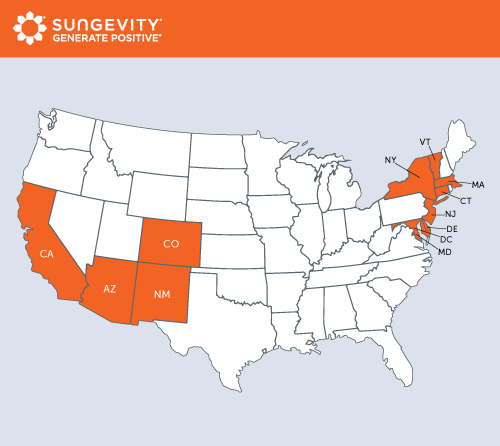Shopping for home solar can feel overwhelming because, at first glance, many companies look the same. How do you tell them apart and choose the right system and company for you? We put together a list of 10 questions to ask every solar company to help you make the best decision.
Question #1: Is this a firm quote or an estimation?
Why: Decisions are better made with real numbers. The more accurately a company understands your energy needs, the better it can develop a quote that addresses your future electricity usage and optimizes your bill savings. If the quote is estimated and is liable to change after you’ve signed a contract, make sure you understand how the contract addresses changes and whether you have the option to approve changes or cancel.
Question #2: Do you guarantee the system’s performance? What happens if the system doesn’t produce as much as you promise?
Why: Most solar companies will offer a production guarantee, but the specifics matter. Confirm that the company will pay you the difference if your system underperforms, and that the rate is similar to the amount you pay your utility company.
Question #3: Between a lease, PPA and loan, which financing options can you offer me? Given my situation, would you recommend financing or buying the system outright?
Why: Some financing options are a better fit for certain households, depending on income level, credit score, tax appetite, and other factors. Make sure to shop around, and don’t get discouraged if one option isn’t viable for you. Another solar company might offer a different option that makes going solar possible for you. Understanding your options is key to making the best financial decision for your family.
Question #4: Who designed this system? Does someone double-check that it will fit on my roof?
Why: Many companies have their salespeople design systems, but this practice can result in systems that are oversized or that don’t meet the local building code. Ask who designed the system: was it someone with technical expertise who understands what is or is not possible to build? Is someone checking the work to make sure the system fits on your roof and is up to code?
Question #5: How do you forecast the system’s energy production? Do you take shading into account?
Why: A solar system’s actual electrical output is not equal to what the panels are rated to produce, so verify that the company has a robust methodology for forecasting your system’s actual production. The best forecasts take into consideration factors related to your specific roof (e.g. roof pitch, shading and angle to the sun) as well as factors related to your home’s location (e.g. solar energy potential and historical weather patterns).
Question #6: Given my roof’s shading and size, do you recommend a single inverter system, microinverters, or high efficiency panels?
Why: A standard solar system gives most households the best bang for their buck. This system typically includes a single inverter and ~250 watt panels. But, under certain circumstances, it may be worth the extra money to seek microinverters or high efficiency panels:
- Microinverters allow you to put solar panels on multiple roof faces, instead of in one or two contiguous rectangles, to accommodate atypical roof shapes or shade patterns.
- High efficiency panels (~325 watts) are useful for households with small rooftops.
Ask the solar company which system equipment will work best for your roof type.
Question #7: Do you have experience getting permits for installing solar in my area?
Why: Each jurisdiction has different building codes that affect your system design. Remember that your local municipality has the final say on whether your system gets interconnected to the electrical grid. If your installation doesn’t meet the local building code, you may be required to make costly modifications to your system before it can be interconnected.
Question #8: Who is installing the system? Do you assess each finished installation for quality?
Why: Solar systems have a lifetime of least 20 years on your rooftop, so make sure the installers will do the work right. What kind of licenses do they have? Does the company incentivize their installers to meet high quality standards on every single job?
Question #9: Do you conduct a roof inspection? What happens if I sign up with you and my roof doesn’t meet your requirements?
Why: A good rule of thumb is that your roof should have at least 10 years of life left before installing solar panels. If an inspection reveals that your roof doesn’t meet that requirement, your solar company may request that you reroof before installation. Ask whether the company’s contract contains a clause that lets you out of the agreement if your roof isn’t up to snuff, and whether the company will charge you a cancellation fee for doing so.
Question #10: How do you protect my roof against leaks?
Why: Ask about the hardware that the solar company uses to mount the solar panels. Is the seal watertight? Will it withstand wear and tear over the lifetime of the solar installation? Most importantly, make sure the installer is responsible for fixing any damage that the installation might cause to your roof so you’re not left high and dry (or, in the worst case scenario, damp).
Ready to start your solar research? Request an iQuote to learn whether Sungevity would be the right choice for you.
Sungevity is a global solar energy provider focused on making it easy and affordable for homeowners to benefit from solar power. See solar differently at www.sungevity.com.











